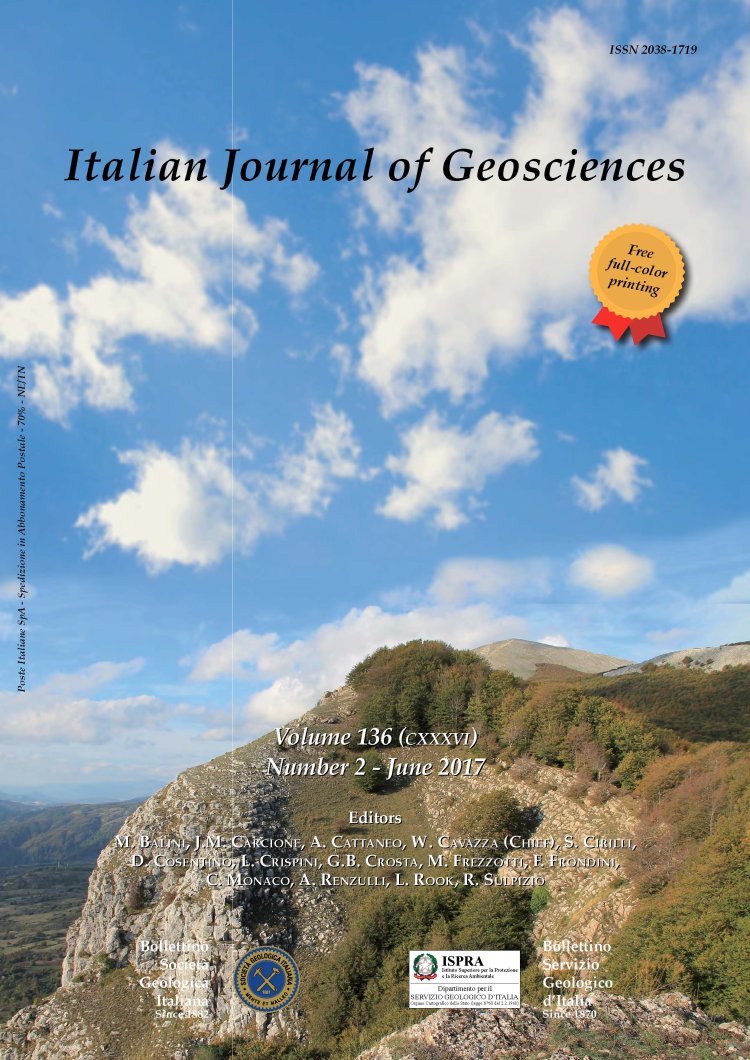
On the occurrence of the Neapolitan Yellow Tuff tephra in the Northern Phlegraean Fields offshore
(Eastern Tyrrhenian margin; Italy)
Gemma Aiello (1), Donatella Domenica Insinga (1), Marina Iorio (1), Agostino Meo (2) & Maria Rosaria Senatore (2)
(1) Istituto per l'Ambiente Marino Costiero, Consiglio Nazionale delle Ricerche (CNR), Calata Porta di Massa, Porto di Napoli, 80133, Napoli, Italy. Corresponding author e-mail: gemma.aiello@iamc.cnr.it.
Gemma Aiello. Istituto per l'Ambiente Marino Costiero. Consiglio Nazionale delle Ricerche (CNR). Calata Porta di Massa – Porto di Napoli. 80133 – Napoli –Italy. Tel. 39-81-5423820 Fax: 39-81-5423888.
(2) Dipartimento di Scienze e Tecnologie, Università degli Studi del Sannio, CoNISMA, Benevento, Italy.
Volume: 136 (2017) f.2
Pages: 263-274
Abstract
A main volcanic marker has been identified for the first time on the continental shelf of the northern Phlegraean Fields in the Gulf of Gaeta (Campania region, eastern Tyrrhenian margin, Italy) by means of Subbottom Chirp profile grid and stratigraphic analysis of a core collected on the slope. In the seismic sections, the core bottom corresponds to the top of a continuous and parallel reflector (V) interbedded within the transgressive deposits of the Late Quaternary-Holocene depositional sequence. The Transgressive System Tract deposits are particularly thick compared to the majority of the transgressive deposits of other shelf settings. This might be due to the input of pyroclastic and volcaniclastic deposits related to the intense eruptive activity of the Campania Plain during the Late Pleistocene-Holocene time span. Undulations and pockmarks are the main morphological features of the sea floor and they might be linked to gas uprising, widely detected in the study area. The V reflector is located on the shelf from northeast to southwest at different depths, ranging from 10 ms (about 8 m) to 30 ms (about 25 m) below sea floor and it can be mapped down to the continental slope. The tephrostratigraphic analysis of this continuous reflector allowed to correlate it with the Neapolitan Yellow Tuff deposits emplaced at Phlegraean Fields at ca. 15 ka.
Keywords
Get Full Text